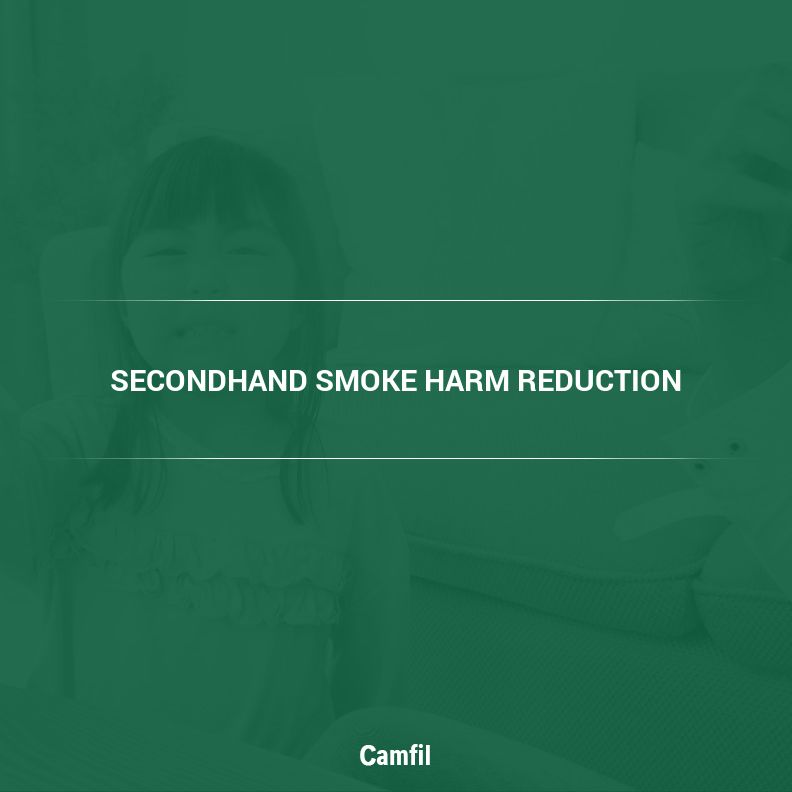The dangers associated with secondhand smoke are undeniable; it is estimated that secondhand smoke causes 7,000 deaths from lung cancer every year in the US alone. To reduce these health risks, many states have implemented smoking bans in public places. However, there is an ongoing debate between proponents of smoking bans and those arguing for air filtration systems as a more effective way to reduce exposure to secondhand smoke. In this article, air quality experts from Camfil compare the effectiveness of smoking bans and air filtration to reduce poor health outcomes for non-smokers that result from secondhand smoke.
Commercial Air Filtration Systems
Air filtration systems can be designed to trap both chemical and particle contaminants suspended in the air before they reach human lungs. Industrial HEPA filters can be used to remove particles from the air such as dust, pollen, mold spores, and smoke. High-efficiency particulate arrestance (HEPA) filters are designed to capture a minimum of 99.97 percent of particles that are 0.3 microns or larger in size; this includes most common irritants found in indoor environments such as cigarette smoke particles.
Molecular filtration systems use activated carbon media to capture contaminants that are smaller than the particles captured by HEPA filters; this includes odors, vapors and gasses from cigarettes and other sources of pollution. Activated carbon traps chemical compounds on its surface through a process known as adsorption; this binds the molecules together, preventing them from being released into the air where they can be inhaled by people in the vicinity of the smoker. Molecular filtration is used for a variety of purposes:
- Airports – to remove jet fumes
- Museums – to remove sulfur, nitrogen oxides and artifact-damaging ozone
- Nuclear facilities – to remove radioactive isotopes
- Pesticide factories – to remove pesticide fumes
- Food and beverage facilities – to remove cooking odors
Effects of Air Filtration Systems on Secondhand Smoke
Studies have shown that both industrial HEPA filters and molecular filtration systems can be effective at reducing exposure to secondhand smoke when compared with non-filtered air ventilation systems in public places such as bars and restaurants. In tests conducted by experts at Lawrence Berkeley National Laboratory (LBNL), it was found that using a combination of both types of filter reduced levels of airborne nicotine by 95 percent within 15 minutes after lighting a cigarette; this demonstrates that air filtration systems can dramatically reduce exposure to secondhand smoke over time if implemented correctly.
Furthermore, using an industrial filter system has advantages over smoking bans in terms of controlling secondhand smoke exposure since it does not require smokers to leave the premises or stop smoking altogether. Although smoking bans are highly effective in protecting the lungs of non-smokers from secondhand smoke, it may be unrealistic to eliminate indoor smoking entirely in some buildings, such as hotels.
Air filtration systems are an effective way for businesses to protect their customers and employees against exposure to secondhand smoke if smoking bans or other prohibitive measures are unsuccessful. Studies have shown that both industrial HEPA filters and molecular filtration systems can reduce levels of airborne nicotine significantly within 15 minutes after lighting a cigarette; this demonstrates the effectiveness of the filters in trapping chemical and particle contaminants before entering human lungs.
About Camfil Clean Air Solutions
For more than half a century, Camfil has been helping people breathe cleaner air. As a leading manufacturer of premium clean air solutions, we provide commercial and industrial systems for air filtration and air pollution control that improve worker and equipment productivity, minimize energy use, and benefit human health and the environment. We firmly believe that the best solutions for our customers are the best solutions for our planet, too. That’s why every step of the way – from design to delivery and across the product life cycle – we consider the impact of what we do on people and on the world around us. Through a fresh approach to problem-solving, innovative design, precise process control, and a strong customer focus we aim to conserve more, use less and find better ways – so we can all breathe easier.
The Camfil Group is headquartered in Stockholm, Sweden, and has 31 manufacturing sites, six R&D centers, local sales offices in 35+ countries, and about 5,200 employees and growing. We proudly serve and support customers in a wide variety of industries and in communities across the world. To discover how Camfil USA can help you to protect people, processes and the environment, visit us at www.camfil.us/
##
Media Contact:
Lynne Laake
Camfil USA Air Filters
T: 888.599.6620
E: Lynne.Laake@camfil.com
The post Smoking Bans vs Air Filtration Systems for Secondhand Smoke Harm Reduction — Which Is More Effective appeared first on Air Filters for Clean Air.

